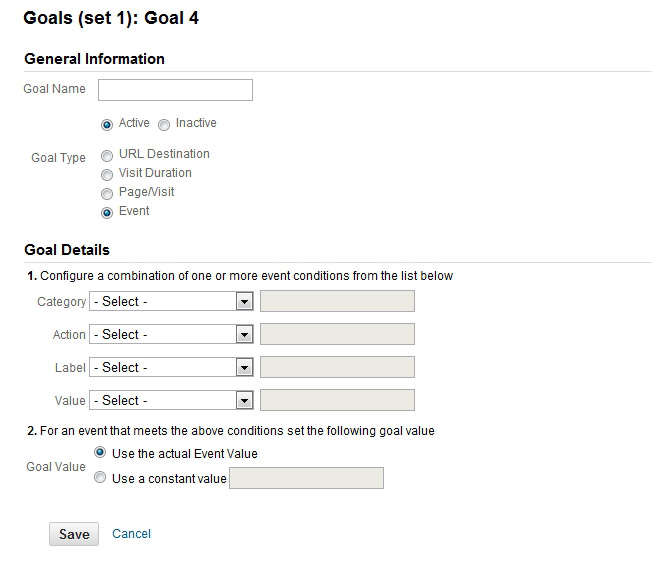Unveiling the Blind Attractions: Comprehending What Google Analytics Goals Can not Gauge
In the world of digital analytics, Google Analytics stands as an effective tool for tracking and analyzing online customer interactions. Understanding what Google Analytics objectives can not measure is crucial for gaining a detailed view of user habits and interaction.
User Habits on External Operatings Systems
Comprehending how users engage on external systems is essential for optimizing online techniques. Exterior platforms, such as social networks networks, referral websites, and online discussion forums, play a significant function in driving website traffic to a company's internet site. By evaluating user habits on these platforms, companies can acquire useful understandings into the effectiveness of their marketing efforts and the preferences of their target market.
One secret aspect of user actions on outside systems is the recommendation resource. By tracking where the customers are originating from, businesses can recognize which systems are driving one of the most traffic to their website. This details can aid business assign their sources extra effectively, focusing on the systems that produce the best results.

Offline Interactions and conversions
Assessing user actions on external platforms provides useful understandings into on-line approaches; nevertheless, taking into consideration offline conversions and interactions is just as important for a thorough understanding of a firm's overall performance. While Google Analytics excels at tracking on the internet communications, it drops brief in recording the full consumer journey that often includes offline touchpoints. Offline conversions, such as in-store acquisitions or phone inquiries, play a substantial role in lots of organizations' success. Ignoring these communications can lead to an altered sight of the effectiveness of marketing projects and overall company performance.

Attribution Beyond Last Click
When diving right into the world of digital advertising and marketing analytics, it becomes necessary to look past the single touchpoint of the last click for a more detailed understanding of acknowledgment. While Google Analytics provides important insights into customer behavior, relying entirely on last-click attribution can be limiting - what data is google analytics goals unable to track. Acknowledgment designs that surpass the last click supply a much more nuanced sight of the client trip, thinking about all the touchpoints that lead to a conversion
Attribution beyond the last click allows online marketers to designate credit to numerous interactions along the conversion path, providing go to this website a clearer image of the efficiency of various advertising and marketing networks. By exploring multi-touch acknowledgment versions such as linear, time decay, or position-based attribution, services can much better allot their marketing budget plans and maximize their strategies for maximum influence.
Recognizing the influence of each touchpoint in the conversion procedure is critical for making educated decisions and optimizing ROI. By welcoming attribution beyond the last click, organizations can get deeper insights into customer habits and customize their advertising initiatives more efficiently.
Cross-Device and Cross-Browser Tracking

In a similar way, cross-browser tracking matches cross-device tracking by catching user behavior as they change in between different internet browsers. Understanding just how individuals communicate with internet sites on various browsers can aid marketers optimize their on the internet experiences to ensure uniformity and functionality throughout different platforms.
Qualitative Information and User Intent
Understanding customer intent through qualitative data analysis is crucial for developing targeted digital marketing methods that reverberate with the demands and preferences of the target market. Qualitative data provides understandings into the 'why' behind customer Home Page activities, losing light on inspirations, feelings, and choices that quantitative data alone can not catch. By evaluating customer comments, remarks, and interactions, marketing experts can discover important information regarding user intent, allowing them to tailor their messaging, material, and offerings to better straighten with what their audience is seeking.
Qualitative information additionally aids in understanding the context in which users engage with a site or application. This contextual understanding allows online marketers to create more appropriate and customized experiences, eventually driving greater engagement and conversion prices. By diving right into user intent via qualitative data analysis, companies can obtain a much deeper understanding of their target audience, resulting in much more effective marketing strategies that satisfy users' needs and expectations.
Verdict
Finally, Google Analytics goals have restrictions in gauging user behavior on exterior systems, offline conversions, acknowledgment beyond last click, cross-browser and Homepage cross-device monitoring, and qualitative information connected to individual intent. what data is google analytics goals unable to track. It is vital for businesses to be mindful of these unseen areas in order to supplement their information evaluation with other tools and techniques to obtain a more thorough understanding of their audience and boost their overall electronic advertising methods
By examining customer actions on these systems, businesses can obtain valuable insights right into the performance of their advertising and marketing efforts and the choices of their target audience.
Analyzing customer actions on outside systems provides beneficial insights into on-line strategies; nonetheless, thinking about offline conversions and communications is equally vital for a comprehensive understanding of a firm's overall efficiency.In digital advertising and marketing analytics, relocating beyond last-click acknowledgment to explore cross-device and cross-browser monitoring is necessary for getting an all natural understanding of individual interactions throughout numerous systems and tools. By examining user feedback, remarks, and interactions, online marketers can reveal useful details about user intent, enabling them to customize their messaging, content, and offerings to much better line up with what their target market is seeking.
By diving into individual intent through qualitative information evaluation, companies can gain a deeper understanding of their target audience, leading to more efficient advertising approaches that fulfill customers' assumptions and requirements.